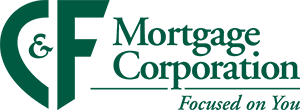Adjustable Rate Mortgage 101
When buying a home, there are many factors to consider, one of the most important being the type of financing you use to make this important investment. Several mortgage programs are available, depending on your preferences and financial history. Deciding which type of mortgage you’d like to utilize might seem overwhelming, but fortunately, a great lender will help you make the best choice for your personal needs! Below, we’ll discuss one particular type of mortgage, an adjustable-rate mortgage, or ARM.
What Is An Adjustable Rate Mortgage?
An adjustable-rate mortgage (ARM) is unique in that the interest rate is variable and can adjust over the life of the loan. Unlike a fixed-rate mortgage, in which the rate you receive at the purchase date will remain in place until you pay off the mortgage, an ARM can vary, causing your monthly payments to vary.
- Initial Period – This is the only time when your ARM will have a fixed interest rate based on the terms of your loan. Most initial fixed-rate periods last for 7 or 10 years. During this time, your monthly payments will always be the same.
- Adjustment Period – After the initial period ends, your interest rate will become variable based on the current market and your individual loan terms. Your monthly payment can vary from this point forward, so you should be prepared for this up front.
As an example, if a lender is offering a 5/1 ARM, this means that the rate is fixed for the first five years and your rate can adjust once per year after that time frame. Most ARMS have a rate cap that prevents your rate from increasing or decreasing too significantly.
While some prefer the certainty of a fixed-rate mortgage, there are times when an ARM is a better option. If you’re buying when interest rates are very high, an ARM might be beneficial since ARM loans may have a better rate option than a fixed-rate.
The only way to change an interest rate with a fixed-rate mortgage is to refinance, whereas, with an ARM, your rate may change after your initial period. If rates decrease after your initial period, you’ll find that your monthly payment may decrease. On the other hand, if rates increase, your monthly payments may increase.
Another reason you may consider an ARM is if you know you’ll be living in the home for a short time, less than five years or so. You can take advantage of a lower rate with an ARM than a fixed-rate mortgage then sell the home by the time your initial fixed period ends.
If you do opt for an ARM when purchasing a home, there’s always the opportunity to refinance into a fixed-rate mortgage later down the road if rates lower.
Whether you’re just beginning your home search or you’re ready to make an offer, our team at C&F Mortgage is here for you every step of the way. Get in touch with us today to learn more about our loan programs and to determine which best fits your needs!


I am interested in the current ARM rate? My credit score is 814. r